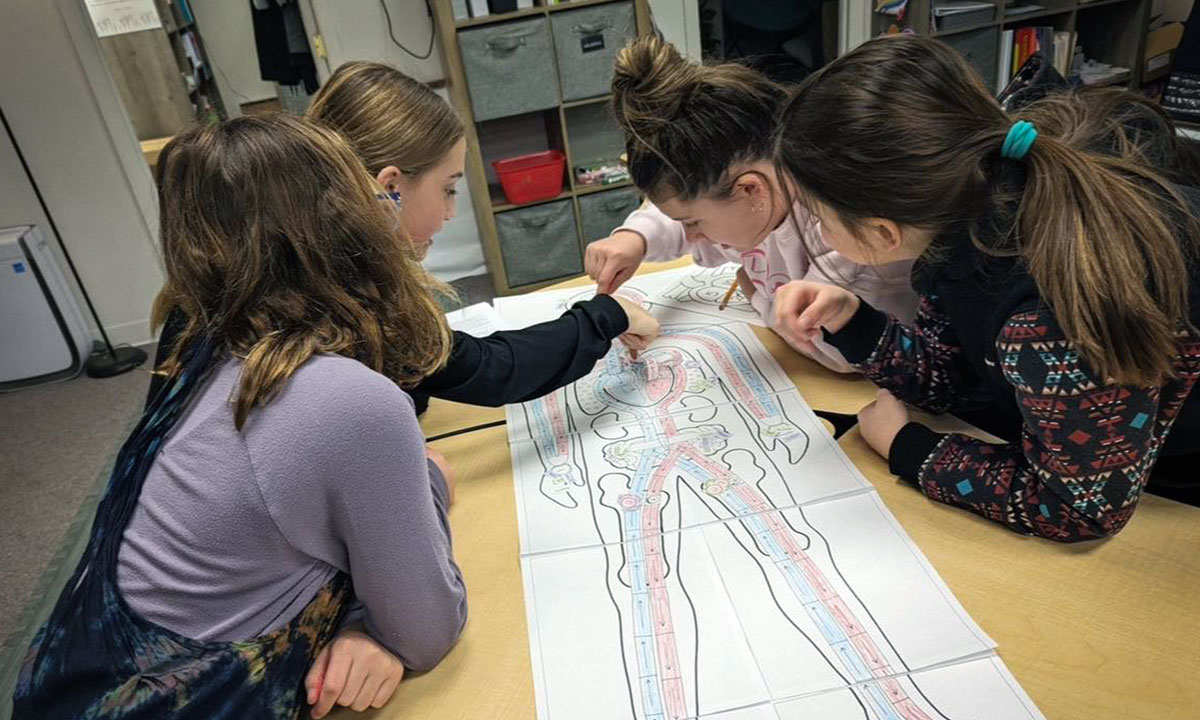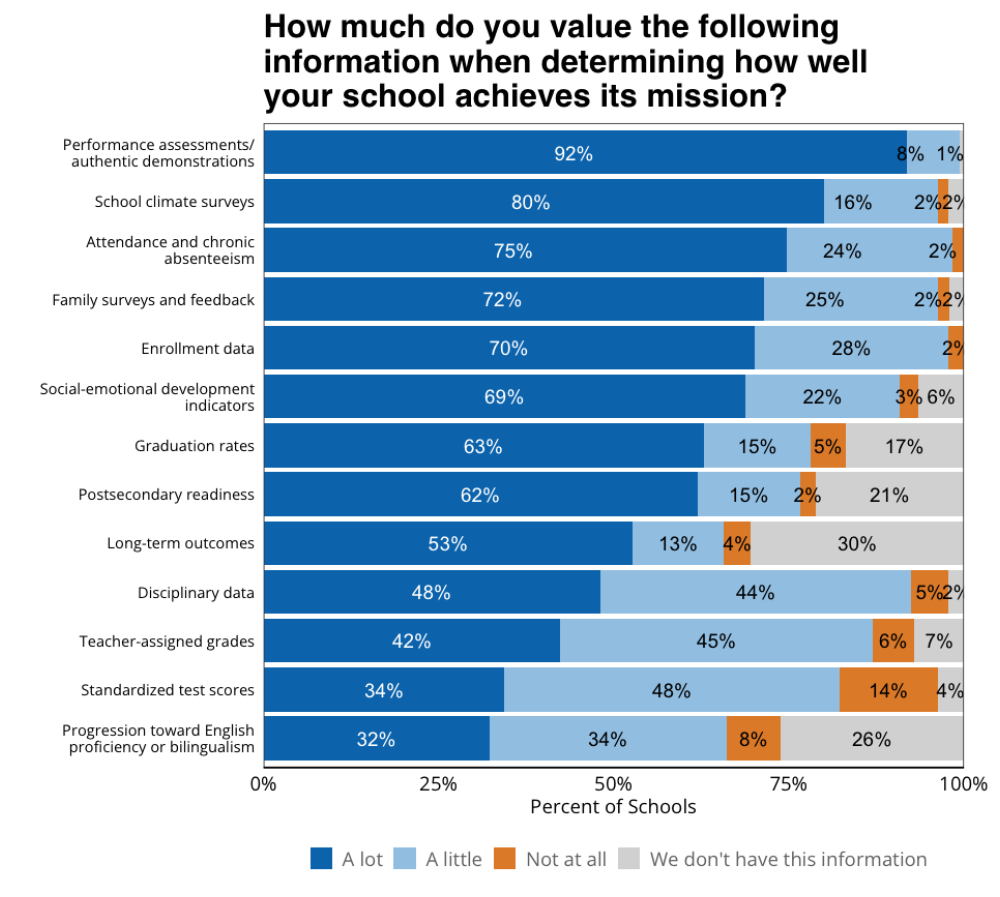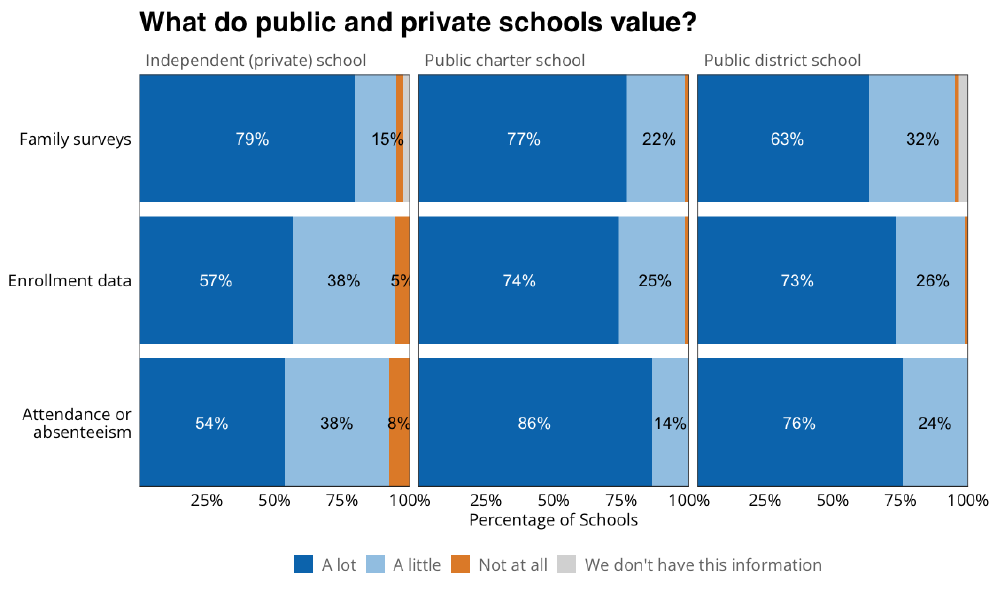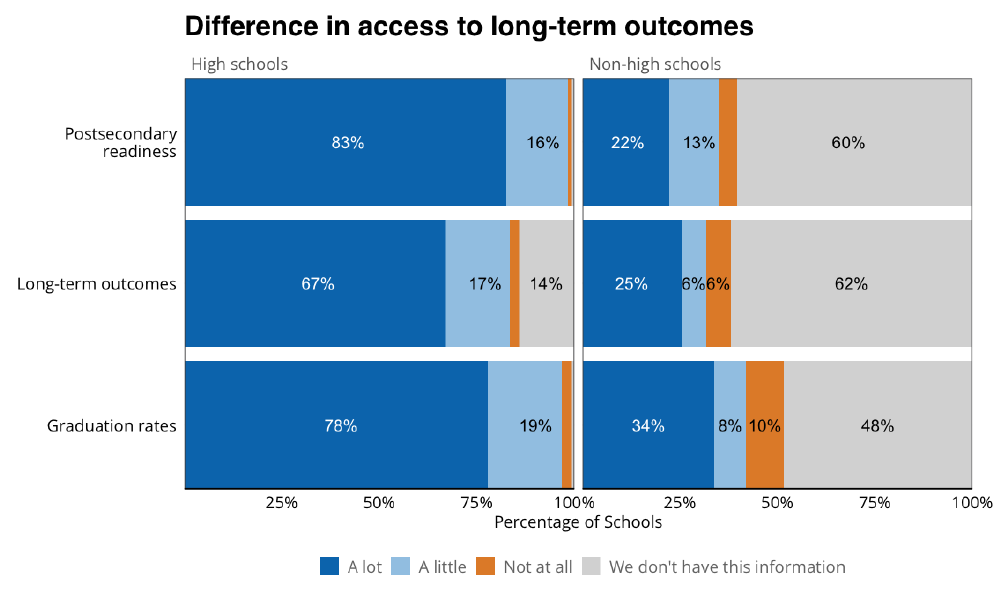Beyond Test Scores: 186 Innovative Educators on How to Know a School Is Good
Waite: Respondents to Canopy project point to student presentations & portfolios, school culture and attendance among indicators of real quality

Get stories like this delivered straight to your inbox. Sign up for The 74 Newsletter
School options are proliferating, with the Trump administration and some state and federal policymakers encouraging choice-friendly policies. But choice isn’t magic. Simply having options isn’t enough to help families — they need to know whether a school is good.
At the most basic level, it matters that schools effectively teach children to read and do math. Policymakers and parents should push states to communicate this information transparently, even though at the federal level accountability is being weakened and testing deemphasized.
But, as parents know from experience, there’s a lot more that makes a school a good place to learn and grow. What information about quality can complement test scores — or replace them, if testing recedes?
We asked 186 forward-thinking school leaders in the Canopy project, a collaborative effort to share information about K-12 innovation, about the information they use to determine whether their schools are doing a good job. participating schools were nominated for using new methods to achieve more equitable student outcomes by a diverse group of experts at education-related organizations. In this cohort, 44% are district schools, 35% are public charters and 21% are independent schools (you can view the project’s school database, showing 276 schools from the last two years of Canopy surveys). These examples provide glimpses into how school can be different — and, as our most recent survey shows, their educators judge their own success in ways that go beyond test scores.

Canopy schools value demonstrations of learning, not just test scores
Nearly all (92%) of the school leaders surveyed said they value data from performance assessments “a lot.” Unlike traditional tests, this approach has students demonstrate what they know through presentations, portfolios and real-world problem solving. They help capture not just academic knowledge, but skills like collaboration, communication and creative thinking that are difficult to measure through standardized tests.
It’s no surprise that so many innovative schools use performance assessments, which let students show what they’ve learned by giving a presentation or assembling a portfolio of their work instead of taking a test. Performance assessments also align with the instructional practices common in Canopy schools, like project-based learning and competency-based education (where students move forward by mastering specific skills). These approaches emphasize hands-on learning and prioritize skills like communication and critical thinking, which performance assessments are better at capturing than traditional written exams.
How do schools bring these assessments to life? At The Innovation School, a microschool in Bismarck, North Dakota, students choose their own way of showing what they’ve learned and present their work to others in the school. At Gibson Ek High School in Issaquah, Washington, students give presentations about their accomplishments, including insights from internships, three times a year to peers, teachers and families. Students at Gibson Ek apply to colleges using a mastery transcript to show what skills they’ve developed, instead of relying on traditional grades.
Canopy schools care about school culture and invest in it
When judging their own quality, most Canopy schools reported relying on information about school climate (80% said they depend on this “a lot”) and students’ social and emotional development (69% said they rely on this “a lot,” and 22% “a little.”)
Such attention to school culture and student well-being aligns with what leaders prioritize in their school design. The majority of Canopy schools (76%) reported that they integrate social and emotional learning throughout the school, including in core academics.
Canopy schools pay attention when families — and students — vote with their feet
Leaders at all types of Canopy schools said knowing that students and families want to be there is important. Around three-quarters of leaders said they value attendance and enrollment data “a lot” when gauging whether their school is doing a good job, and another quarter value it “a little.” More public school leaders than private school leaders said enrollment is an important indicator — but more private school leaders said they value family feedback surveys than public district and charter leaders.

Canopy schools make sure students and parents have a say in what happens. For instance, about half of schools (53%) said they involve students, families or both in decision-making.
High schools especially prioritize students’ future opportunities
Especially in high schools, Canopy school leaders consider information about students’ future opportunities important when judging whether their schools are doing a good job. In Canopy, 83% of high schools value college and career readiness “a lot.” Information about students’ long-term outcomes, like earnings and life satisfaction, is also important. However, some schools lack access to essential information: 14% of high schools said they can’t get data about long-term outcomes even if they could value it highly.
Some elementary and middle school leaders are also keeping an eye on information about students’ future opportunities. About a quarter of them said they value information about postsecondary readiness and long-term outcomes “a lot” when gauging their own performance. A third valued information about graduation rates, even if the school doesn’t issue diplomas. But most elementary and middle schools reported they don’t have access to this kind of information.

What kinds of information do Canopy schools value less? Those that tend to loom largest at dinner tables and on school rating sites: grades and test scores. Many leaders responding to our survey said they value these types of information “a little,” but less than half value them “a lot.”
In an era when school choice is expanding, it’s more important than ever to understand what truly makes a school effective. The Canopy project offers a window into how forward-thinking schools are redefining success. Instead of looking mainly at test scores, these schools prioritize a wide range of measures, from performance assessments and school culture to student voice and career readiness, to help them determine whether their schools are delivering a quality education.
But sharing this information has proven to be a hurdle for Canopy schools. Policymakers should incentivize schools to share richer data — especially when schools are already collecting it. Performance assessment information, for example, could be a hidden treasure that families would find meaningful, just as nearly all Canopy school leaders do. As policymakers and parents navigate an evolving educational landscape, they would do well to ensure that every family has access not just to options, but to meaningful information about what makes a school good.
Get stories like these delivered straight to your inbox. Sign up for The 74 Newsletter

;)
